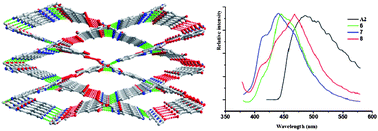Co-crystallization of oxadiazole-bridged pyridyl-N-oxide building modules with R-aromatics (R = –OH, –NH2 and –COOH)†
Abstract
The reaction of

* Corresponding authors
a
College of Chemistry, Chemical Engineering and Materials Science, Key Lab of Molecular and Nano Probe, Engineering Research Center of Pesticide and Medicine Intermediate Clean Production, Ministry of Education, Shandong Normal University, Jinan 250014, P. R. China
E-mail:
yubindong@sdnu.edu.cn
The reaction of

 Please wait while we load your content...
Something went wrong. Try again?
Please wait while we load your content...
Something went wrong. Try again?
G. Hou, J. Ma, L. Wang, P. Wang, Y. Dong and R. Huang, CrystEngComm, 2010, 12, 4287 DOI: 10.1039/B923810G
To request permission to reproduce material from this article, please go to the Copyright Clearance Center request page.
If you are an author contributing to an RSC publication, you do not need to request permission provided correct acknowledgement is given.
If you are the author of this article, you do not need to request permission to reproduce figures and diagrams provided correct acknowledgement is given. If you want to reproduce the whole article in a third-party publication (excluding your thesis/dissertation for which permission is not required) please go to the Copyright Clearance Center request page.
Read more about how to correctly acknowledge RSC content.
 Fetching data from CrossRef.
Fetching data from CrossRef.
This may take some time to load.
Loading related content
